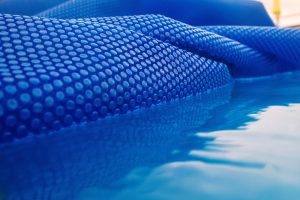WILL-DO: Post summary of readings here
Apologies for the verbose post - once I understand more, I will update the WILL-DO portion above with a, b, c below
These are readings from my aunt's pool last week, I didn't get around to posting until today.
I took the water sample around 7 - 7:30AM before dropping the kids off and heading to the office. I did the tests likely between 9:30 - 10AM, so 3 hours after taking the sample.
The sample was stored in a screw on brand new plastic canister all this time and smelled of Chlorine (or is that Chloramines?).
The first test I did was the FC, CC test.
With a 10ml water sample (taken a foot below the top of the surface), I added R-0870 and it turned pink
1. My R-0870 is very clumped up and I tried to crush the clumps using the scoop but that didn't seem to work - adding it to the sample did dissolve 80% of it but 20% of it remained undissolved - is this something to worry about?
I added one drop of R-0871 and it cleared immediately.
2. This means FC = 0.5 (or less)?
Then added 5 drops of R-003 and it turned pink on the 4th and 5th drop. I added one drop of R-0871 and it cleared immediately, again.
3. This means CC = 0.5 (or less)?
4. This means TC = FC + CC = 1.0 (or less)?
I then proceeded to do the TA. On the 5th drop of R-009, the green immediately turned dark pink (compared to the pink in the FC, CC test but not red - is this something to worry about?)
5. This means TA = 50 (or less)?
Last was the CYA test - the red capped CYA bottle did turn cloudy but the black dot was always visible from the top even after I filled up the tube completely.
6. This means the pool has very little CYA?
7. But it's not 0 CYA because it did turn cloudy while a 0 CYA sample would never turn cloudy at all?
Given all of the above, is it correct to say:
a. TC = FC + CC = 0.5 (or less) + 0.5 (or less) = 1.0 (or less)
b. TA = 50 (or less)
c. Non measurable CYA
To refresh your memory, this pool is dark swampy green (like this Featured - Pool green and provides no visibility 7" below surface) and feels like it's starting to smell like the beach (I've been adding 1Gal of LC every day in the evening on my way back from work). The DE Filter is currently bypassed and pump runs 12 hours every day building a 14PSI pressure in the system.
I am planning to visit my aunt again on Sunday and can take readings again.
Apologies for the verbose post - once I understand more, I will update the WILL-DO portion above with a, b, c below
These are readings from my aunt's pool last week, I didn't get around to posting until today.
I took the water sample around 7 - 7:30AM before dropping the kids off and heading to the office. I did the tests likely between 9:30 - 10AM, so 3 hours after taking the sample.
The sample was stored in a screw on brand new plastic canister all this time and smelled of Chlorine (or is that Chloramines?).
The first test I did was the FC, CC test.
With a 10ml water sample (taken a foot below the top of the surface), I added R-0870 and it turned pink
1. My R-0870 is very clumped up and I tried to crush the clumps using the scoop but that didn't seem to work - adding it to the sample did dissolve 80% of it but 20% of it remained undissolved - is this something to worry about?
I added one drop of R-0871 and it cleared immediately.
2. This means FC = 0.5 (or less)?
Then added 5 drops of R-003 and it turned pink on the 4th and 5th drop. I added one drop of R-0871 and it cleared immediately, again.
3. This means CC = 0.5 (or less)?
4. This means TC = FC + CC = 1.0 (or less)?
I then proceeded to do the TA. On the 5th drop of R-009, the green immediately turned dark pink (compared to the pink in the FC, CC test but not red - is this something to worry about?)
5. This means TA = 50 (or less)?
Last was the CYA test - the red capped CYA bottle did turn cloudy but the black dot was always visible from the top even after I filled up the tube completely.
6. This means the pool has very little CYA?
7. But it's not 0 CYA because it did turn cloudy while a 0 CYA sample would never turn cloudy at all?
Given all of the above, is it correct to say:
a. TC = FC + CC = 0.5 (or less) + 0.5 (or less) = 1.0 (or less)
b. TA = 50 (or less)
c. Non measurable CYA
To refresh your memory, this pool is dark swampy green (like this Featured - Pool green and provides no visibility 7" below surface) and feels like it's starting to smell like the beach (I've been adding 1Gal of LC every day in the evening on my way back from work). The DE Filter is currently bypassed and pump runs 12 hours every day building a 14PSI pressure in the system.
I am planning to visit my aunt again on Sunday and can take readings again.
Last edited:


